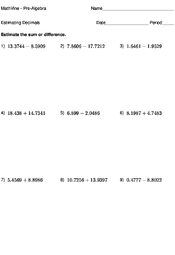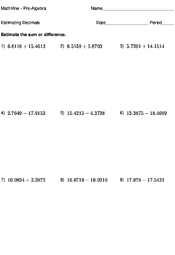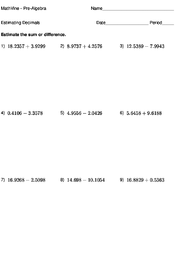Estimating Decimals
Introduction
Estimating is a really useful tool in Math. It can help you to complete sums more quickly and can make sure that you don't make mistakes with your mental math.
Estimating with decimals means rounding the decimals to simpler numbers and then adding or subtracting these to find an answer very near, but not exactly, the right answer.
Terms
Lesson
To estimate decimals you need to round them to a number you are comfortable with. In some cases this is simple. An item that costs $9.99 in a store you can easily round to $10.
So, if you are buying two items in a store, one that costs $4.99 and one that costs $14.99, you can round the first item to $5 and the second to $15, and then add these two numbers to get a rough final total (assuming there is no sales tax to pay):
Therefore, you can assume you will pay $20 for your items.
To be a bit more advanced, you can remember that you added $0.01 (or 1 cent) to each item to round it up, so you can subtract that from the final total to find the actual number:
Therefore, your actual final total will be $19.98.
You can also use estimating with other calculations. For example, when you find the circumference of a circle, you multiply the diameter of the circle by pi (). Pi is a useful mathematical number when it comes to circles, but it is extremely difficult to work with in your head because it has an infinite number of digits after the decimal place:
Therefore, imagine a circle with a diameter of 5. If we want to find the circumference we need to multiply 5 by . However, we can just estimate or round to 3.1 and we will get a close enough answer:
As long as we know this isn't totally precise, it will be good enough for us to continue with our calculations.
When you estimate with decimals, remember that your answers are close to, but not exactly the right answer!


